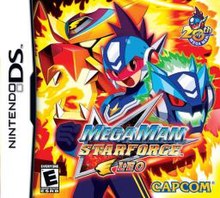Mega Man, known as Rockman in Japan, is a Japanese science fiction video game franchise created by Capcom, starring a series of robot characters each known by the moniker "Mega Man". The original game was released for the Nintendo Entertainment System in 1987, and spawned a franchise that expanded to over 50 games on multiple systems. As of July 2023, the series has sold 40 million units worldwide.

Mega Man 5 is an action-platform video game developed by Capcom for the Nintendo Entertainment System. It is the fifth game in the original Mega Man series and was released in Japan on December 4, 1992. It saw a release during the same month in North America and in 1993 in Europe.
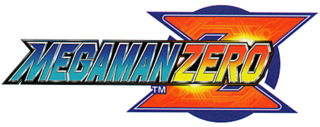
Mega Man Zero is a series in Capcom's Mega Man video game franchise. It was developed by Inti Creates, with Co-Producer Keiji Inafune and Director Yoshinori Kawano. The series consists of four games that were first released on the Game Boy Advance and later on the Nintendo DS and the Virtual Console.

Mega Man Legends is a series in the Mega Man franchise. While the main series is known for its 2D side-scrolling platformer gameplay with very little story, this series instead features 3D action-adventure gameplay and a robust story.

MegaMan NT Warrior is an anime and manga series based on the Mega Man Battle Network series by Capcom, both using the same name but heavily diverging from each other in terms of plot. The manga series was written by Ryo Takamisaki and ran in Shogakukan's CoroCoro Comic between 2001 and 2006, while the anime television series, produced by Xebec, Nihon Ad Systems and TV Tokyo, ran for five seasons on TV Tokyo in Japan between March 2002 and September 2006, reaching 209 episodes in total, as well as a feature film. Viz Media would license the series for distribution in North America, including all the main chapters of the manga between 2004 and 2008, while the anime would only have its first season and Axess aired on Kids' WB! from 2003 to 2005.
Mega Man Battle Network is a tactical role-playing video game series created by Masahiro Yasuma and developed and published by Capcom as a spin-off of the Mega Man series; it premiered in 2001 on the Game Boy Advance and takes place in an alternate continuity where computers and networking technology was the main focus on scientific advancement, rather than robotics. There are a total of six mainline games, alongside several spin-offs.

Mega Man Battle Network is a role-playing video game developed by Capcom for the Game Boy Advance (GBA) handheld console. It is the first title of the Mega Man Battle Network series of games. It was originally released in Japan as a GBA launch game on March 21, 2001 and was released later that year in North America and Europe. It was also released via the Wii U Virtual Console in Japan on July 9, 2014, in Europe on July 24, 2014, and in North America on July 31, 2014.

Mega Man Battle Network 5: Team ProtoMan and Mega Man Battle Network 5: Team Colonel are 2004 role-playing video games developed and published by Capcom for the Game Boy Advance (GBA) handheld game console. Combined, they make up the fifth mainline installment in the Mega Man Battle Network series, and follows Lan Hikari and his NetNavi MegaMan.EXE, as they attempt to take down Nebula, who have kidnapped Lan's father and taken over the internet, with an anti-Nebula task force.
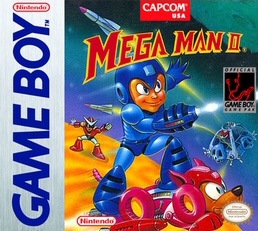
Mega Man II is an action-platform video game by Capcom for the Game Boy. It is the second game in the handheld version of the Mega Man series after Mega Man: Dr. Wily's Revenge. It is noteworthy for having been developed by a different company than the rest of the Mega Man titles on the Game Boy.
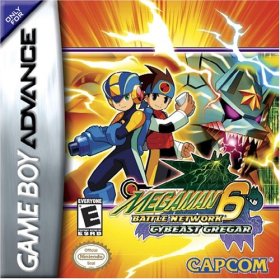
Mega Man Battle Network 6: Cybeast Falzar and Mega Man Battle Network 6: Cybeast Gregar are 2005 tactical role-playing video games developed and published by Capcom for the Game Boy Advance (GBA) handheld game console. They are the sixth and final games in the Mega Man Battle Network series, and involves Lan's family and MegaMan.EXE moving to Cyber City, only to need to stop the returning WWW from re-awakening the Cybeasts.

Mega Man Zero is a 2002 action-platform video game developed by Inti Creates and published by Capcom for the Game Boy Advance (GBA) handheld game console. It is the first installment in the Mega Man Zero series, the fifth series in Capcom's Mega Man video game franchise. The game is set 100 years after the events of the Mega Man X series and follows Zero, a Reploid awakened from his sleep to aid a human scientist named Ciel and her resistance force in a fight against the utopia of Neo Arcadia.
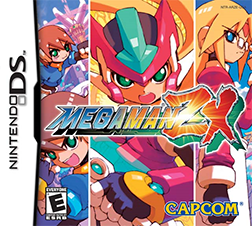
Mega Man ZX is an action platform game developed by Inti Creates and published by Capcom for Nintendo DS. It was released on July 6, 2006 in Japan, September 12, 2006 in North America, June 20, 2007 in Australia, and June 22, 2007 in Europe.

Mega Man X is a series of action platform video games released by Capcom. It is a sub-series of the Mega Man franchise. The first game was released on December 17, 1993 in Japan on the Super Famicom and the following month on the SNES in North America; most of the sequels were ported to the PC platform. The gameplay introduced new elements to the Mega Man franchise including the ability to dash and climb walls. The first six games in the series were compiled in the anthology Mega Man X Collection.

Mega Man Star Force, known as Ryūsei no Rockman is an anime and manga series based on the video game of the same name. The series follows the adventures of Geo Stelar and Omega-Xis, a duo capable of merging with each other to become the hero "Mega Man". Together, they combat various EM wave beings that threaten to conquer or destroy the Earth.

Mega Man Star Force 2, known in Japan as Ryūsei no Rockman 2, is a video game developed by Capcom for the Nintendo DS handheld game console. It is the sequel and second game in the Mega Man Star Force series. The game was first confirmed on April 12, 2007 in an issue of CoroCoro Comic. The same issue also revealed that a boss design contest would be held exclusively in Japan much like the same contests held for the Battle Network games. A sequel, Mega Man Star Force 3, was released on November 13, 2008 in Japan.

Mega Man Star Force 3, known in Japan as Ryūsei no Rockman 3, is a video game developed by Capcom for the Nintendo DS handheld game console. It is the third and final game in the Mega Man Star Force series. It was released in Japan on November 13, 2008 and in United States on June 30, 2009. The game was released with two versions: Black Ace (ブラックエース) and Red Joker (レッドジョーカー). Each features a unique cover and unique character transformations, among other features. A sequel, Mega Man Star Force 4, was in development from between 2009 and 2010 when it was cancelled due to low sales of this game and Rockman EXE Operate Shooting Star.
Mega Man Legacy Collection is a series of video game compilations based on Capcom's Mega Man franchise. Each compilation features several playable video games from one of the Mega Man sub-series and adds new gameplay features and bonus content such as concept artwork. These compilations were developed internally at Capcom and were released between 2015–2023 for Nintendo Switch, PlayStation 4, Windows, and Xbox One, with the exception of the original Legacy Collection which was developed by Digital Eclipse and also released on Nintendo 3DS.
